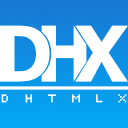
Dojo Toolkit
Dojo Toolkit is an open-source modular JavaScript library designed for rapid development of cross-platform, database-driven web applications. It provides a comprehensive set of widgets, utility functions, and build tools.
License
Open SourcePlatforms
About Dojo Toolkit
Key areas where Dojo excels include:
- Rich User Interface Development: A vast array of pre-built widgets simplifies the creation of complex and responsive interfaces.
- Data Handling: Integrated features for data retrieval, manipulation, and storage, including ORM capabilities.
- Performance Optimization: The modular design and comprehensive build system allow for significant performance tuning.
- Cross-Browser Compatibility: Dojo abstracts away many browser inconsistencies, simplifying development across different platforms.
Pros & Cons
Pros
- Comprehensive set of UI widgets.
- Modular architecture for performance optimization.
- Integrated build system for production deployment.
- Robust data handling capabilities including ORM.
- Mature and stable library with a long history.
Cons
- Can have a steeper learning curve.
- Documentation can be dense at times.
- Community might be smaller than newer frameworks.
- Less opinionated than some modern frameworks.
- May feel less geared towards single-page application architectures compared to newer frameworks.
What Makes Dojo Toolkit Stand Out
Truly Modular Architecture
Enables developers to select and bundle only the required components, leading to optimized application size and load times.
Comprehensive Widget Library
Offers a wide array of pre-built and customizable UI widgets for rapid application development.
Integrated Build System
Provides robust tools for code optimization, minification, and packaging for production environments.
Features & Capabilities
14 featuresExpert Review
Dojo Toolkit Review
The Dojo Toolkit stands as a seasoned player in the realm of JavaScript libraries for web application development. Its origins trace back to a time when client-side development was considerably more challenging, and it has evolved significantly over the years to remain a relevant tool for building complex and data-driven applications.
One of Dojo's primary strengths lies in its modular architecture. Unlike some libraries that require the inclusion of a large monolithic file, Dojo allows developers to cherry-pick the specific modules and components they need. This drastically reduces the overall file size of the deployed application, which is crucial for performance, especially in environments with limited bandwidth. The build system further complements this by providing tools for optimizing and packaging these selected modules for production. This level of control over the application's footprint is a notable advantage.
The toolkit boasts a comprehensive library of UI widgets. From basic form elements like text inputs and buttons to more advanced components such as DataGrids, charts, and even specialized widgets like Kanban boards and pivot tables, Dojo provides a rich set of building blocks. These widgets are designed to be highly customizable and extensible, allowing developers to tailor them to specific application requirements. The presence of these complex widgets out-of-the-box can significantly accelerate the development of data-intensive and interactive user interfaces.
Data management is another area where Dojo provides significant support. Its integration with AJAX allows for seamless communication with backend systems. Furthermore, the inclusion of Object Relational Mapping (ORM) capabilities within the toolkit simplifies the process of handling data structures and interacting with databases from the client-side. This abstract layer reduces the amount of boilerplate code required for data operations.
Dojo also includes utility functions and programming libraries that address common web development challenges. These libraries cover areas like event handling, DOM manipulation, and other foundational tasks. While other libraries offer similar functionalities, Dojo's integrated approach means developers have a cohesive set of tools at their disposal within a single framework.
However, like any technology, Dojo has areas to consider. The learning curve for Dojo can be steeper compared to some more modern JavaScript frameworks. Its comprehensive nature means there's a lot to learn, and its programming style can be different from what developers accustomed to newer frameworks might expect. The documentation, while extensive, can sometimes be dense. Additionally, while the community is active, it might not be as large or as rapidly growing as those surrounding newer libraries, which could impact the availability of readily available solutions to common problems.
In comparison to some contemporary frontend frameworks like React, Vue, or Angular, Dojo might feel less opinionated, offering more flexibility but potentially requiring more decisions and setup from the developer. Its strength lies more in providing a robust set of tools and components for building traditional, enterprise-level web applications rather than being a framework purely focused on component-based architecture.
Overall, the Dojo Toolkit remains a powerful and capable library, particularly well-suited for building complex, data-driven web applications where performance optimization and a rich set of pre-built UI components are critical. Its maturity and stability make it a reliable choice for projects with long lifespans. For developers already familiar with its paradigms or those embarking on substantial enterprise applications requiring a comprehensive toolkit, Dojo continues to be a strong contender.



